When you're breastfeeding, every pill, injection, or cream you use doesn't just affect you-it can reach your baby through your milk. It’s a common fear: "Is this medication safe for my baby?" The truth is, most medications are fine. But knowing which ones are safe, how they get into breast milk, and how to minimize risk makes all the difference.
How Medications Get Into Breast Milk
Medications don’t travel to your baby by magic. They move from your bloodstream into your breast milk through passive diffusion. That means if the drug is in your blood, some of it will naturally end up in your milk. The amount depends on a few key factors:- Molecular weight: Drugs under 200 daltons (like ibuprofen or acetaminophen) pass easily. Anything bigger, like heparin or insulin, barely gets through.
- Lipid solubility: Fatty drugs slip through cell membranes more easily. That’s why some antidepressants and sedatives show up more in milk.
- Protein binding: If a drug is tightly bound to proteins in your blood (over 90%), it can’t easily enter milk. Warfarin and most SSRIs are highly bound, so very little gets through.
- Half-life: Drugs that stick around longer (over 24 hours) have more time to build up in milk. Shorter half-life drugs like penicillin clear faster.
- Ion trapping: In the slightly lower pH of breast milk, weakly basic drugs like lithium or certain antidepressants can get "trapped" and concentrate at 2:1 to 10:1 ratios compared to your blood.
Early on, in the first few days after birth, your milk is colostrum-thick, sticky, and low in volume. Even if a drug gets in, your baby is only drinking 30-60 mL per day. By day 5-7, milk volume increases to 500-800 mL, so timing and choice of medication become more important.
The L1 to L5 Risk Scale: What Your Doctor Should Know
Dr. Thomas Hale developed the most trusted system for rating medication safety during breastfeeding: the L1 to L5 scale. It’s not perfect, but it’s widely used by lactation consultants and doctors.- L1 (Safest): No known risk. Examples: ibuprofen, acetaminophen, most penicillins, levothyroxine.
- L2 (Safer): Limited data, but no adverse effects reported. Examples: sertraline, fluoxetine (in low doses), metformin, azithromycin.
- L3 (Moderately Safe): Possible risk, but benefits may outweigh risks. Examples: amitriptyline, citalopram, tramadol, codeine (use with caution).
- L4 (Possibly Hazardous): Evidence of risk, use only if no alternatives. Examples: lithium, cyclosporine, doxycycline (long-term use).
- L5 (Contraindicated): Proven risk. Examples: chemotherapy drugs, radioactive iodine, bromocriptine.
Here’s the key: 98% of commonly prescribed medications fall into L1 or L2. Only about 1% of all drugs require you to stop breastfeeding. That’s not a statistic you hear often-but it’s the truth.
Most Common Medications and What the Data Shows
Over half of breastfeeding women take at least one medication. The big three? Pain relievers, antibiotics, and mental health drugs.- Analgesics (28.7%): Ibuprofen and acetaminophen are top choices. They’re low in milk, short-acting, and safe for newborns. Avoid aspirin in infants under 6 months-rare but risky.
- Antibiotics (22.3%): Penicillins, cephalosporins, and macrolides like azithromycin are all L1 or L2. Even clindamycin and metronidazole (once thought risky) are now considered safe at standard doses.
- Psychotropics (15.6%): Sertraline is the gold standard for depression and anxiety. It’s low in milk, and studies show no developmental delays in exposed infants. Fluoxetine has a longer half-life and can build up, so it’s often avoided unless necessary. Benzodiazepines like lorazepam are okay occasionally, but avoid long-term or high doses.
For thyroid meds like levothyroxine, you can take your full dose-your baby gets less than 1% of your dose, and it’s not absorbed well. Birth control? Progestin-only pills are fine. Estrogen-containing pills can reduce milk supply, so they’re not recommended in the first 6 weeks.
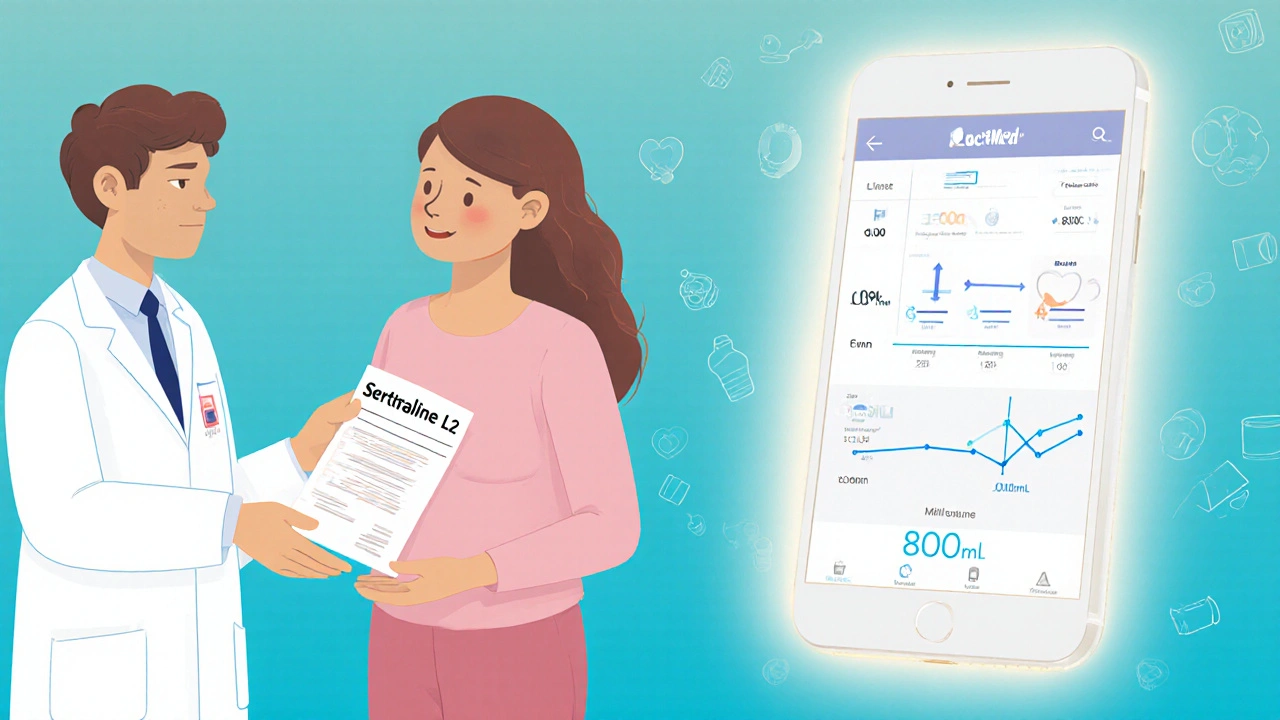
When Timing Matters: How to Reduce Baby’s Exposure
It’s not just about the drug-it’s about when you take it.- Take single-dose medications right after breastfeeding, before your baby’s longest sleep stretch (often after the night feeding).
- For multiple daily doses, take them right before feeding so your body has time to clear the drug before the next feed.
- Avoid extended-release or slow-release versions unless necessary-they keep drug levels steady, meaning more is in your milk over time.
- For topical meds (creams, patches), wash your hands after applying and avoid putting them on your nipple. If you do, wipe it clean before feeding.
One simple trick: if you’re on a daily medication, take it after your baby goes to sleep. By morning, levels in your milk are much lower. This works especially well for antidepressants and pain meds.
Reliable Resources: Where to Check Before You Take Anything
Don’t guess. Don’t rely on old advice or internet forums. Use trusted tools:- LactMed (NIH): Free, updated daily, covers 4,000+ drugs and 350 herbal products. Used by over 1.2 million people a year. It’s technical, but you can search by drug name and get clear summaries.
- Hale’s Medications and Mothers’ Milk: The go-to reference for clinicians. Uses the L1-L5 system and gives practical advice like "take after feeding" or "avoid in preemies."
- MotherToBaby: A free service (run by OTIS) where you can call or chat with a specialist. They handle 15,000+ calls a year and answer questions about antidepressants, pain meds, and more.
- LactMed On-the-Go app: A mobile version of LactMed with 45,000 downloads. Great for quick checks at the pharmacy or doctor’s office.
Here’s what most doctors don’t tell you: if a drug is safe for your baby to take directly, it’s almost always safe in breast milk. That’s why antibiotics like amoxicillin or antifungals like clotrimazole are low risk-they’re given to newborns all the time.
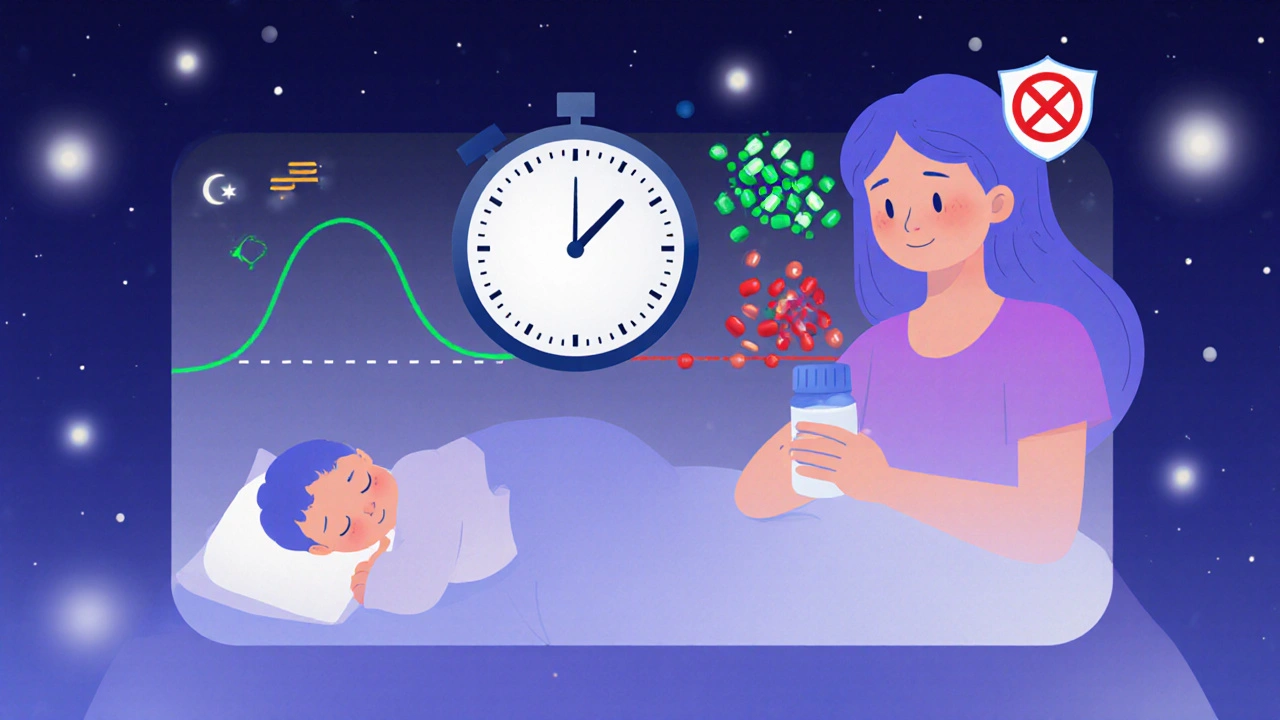
What to Watch For in Your Baby
Most babies show no signs of exposure. But if you’re on a new medication, keep an eye out for:- Unusual sleepiness or fussiness
- Changes in feeding patterns (less interest, more frequent feeds)
- Diarrhea or vomiting
- Unusual rashes
These are rare. Only 1-2% of infants experience any noticeable effect-and even then, it’s usually mild and goes away when the drug clears.
Don’t panic if your baby seems a little off. Talk to your pediatrician. Most of the time, it’s unrelated. But if you’re worried, pause the medication for 24-48 hours (with medical advice) and see if things improve.
What’s Changing in 2025?
The field is evolving fast. The FDA now encourages drug makers to include breastfeeding women in clinical trials. That’s a big deal-until recently, most new drugs had zero data for nursing moms.Biologics (like Humira or Enbrel) are now being studied more. Only 12 out of 85 FDA-approved biologics have enough data to give clear safety advice. But early results are promising-most don’t cross into milk in meaningful amounts.
By 2030, personalized lactation pharmacology could be real. Researchers are testing maternal DNA to predict how fast you’ll process a drug, which could tell you exactly how much your baby will get. Imagine a test that says: "Take this pill at 10 PM, your baby will get 0.01% of your dose-perfectly safe."
For now, we’re not there yet. But we have better tools than ever.
Final Takeaway: You Don’t Have to Choose
You don’t have to pick between being healthy and breastfeeding. The vast majority of medications won’t hurt your baby. Stopping breastfeeding because of a medication is almost always unnecessary.Here’s your action plan:
- Don’t stop a medication without checking with a specialist.
- Use LactMed or MotherToBaby before taking anything new.
- Time your doses to minimize exposure.
- Watch your baby-but don’t assume every cry or sleep change is drug-related.
- Ask your doctor: "Is this safe for breastfeeding?" If they don’t know, ask for a referral to a lactation consultant or pharmacist.
Breastfeeding is powerful. Medications are tools. You don’t have to give up one to protect the other. With the right info, you can do both.
Are all painkillers safe while breastfeeding?
Most are. Ibuprofen and acetaminophen are the safest choices and are recommended by the AAP. Avoid aspirin in babies under 6 months due to rare risk of Reye’s syndrome. Codeine and tramadol are L3-use only if necessary and monitor your baby for sleepiness or breathing issues.
Can I take antidepressants while breastfeeding?
Yes, many are safe. Sertraline is the top choice-it’s low in milk, has decades of safety data, and doesn’t affect infant development. Fluoxetine and paroxetine are also options, but sertraline is preferred. Always start low and monitor your baby for irritability or sleep changes.
Is it safe to take antibiotics while breastfeeding?
Almost always. Penicillins, cephalosporins, and azithromycin are all L1 or L2. Even metronidazole, once thought risky, is now considered safe at standard doses. The only exception is tetracycline with long-term use-it can stain teeth in infants, so it’s avoided in babies under 8.
What about herbal supplements and vitamins?
LactMed now includes over 350 herbal products and supplements. Many are safe, but some-like sage, parsley, or high-dose vitamin B6-can reduce milk supply. Others, like kava or valerian, may affect your baby’s nervous system. Always check LactMed before taking anything labeled "natural."
Can I breastfeed if I’m on chemotherapy?
No. Most chemotherapy drugs are L5-contraindicated. They can damage your baby’s developing cells. You’ll need to stop breastfeeding during treatment. After treatment ends, you can usually restart once the drugs are fully cleared from your system, which your oncologist can help determine.
Does caffeine affect my baby through breast milk?
Small amounts are fine. One to two cups of coffee a day won’t harm most babies. But caffeine has a long half-life in newborns-it can build up. If your baby is unusually fussy or has trouble sleeping, try cutting back for a few days to see if it helps.
What if I need a medication that’s not safe for breastfeeding?
There are usually alternatives. If your doctor says a drug is risky, ask: "Is there another one that’s safer?" If not, you can pump and dump during treatment and resume breastfeeding afterward. Some drugs clear quickly-like certain antibiotics or pain meds-so you can pump and store milk before taking the dose. Always talk to a lactation specialist before making a decision.

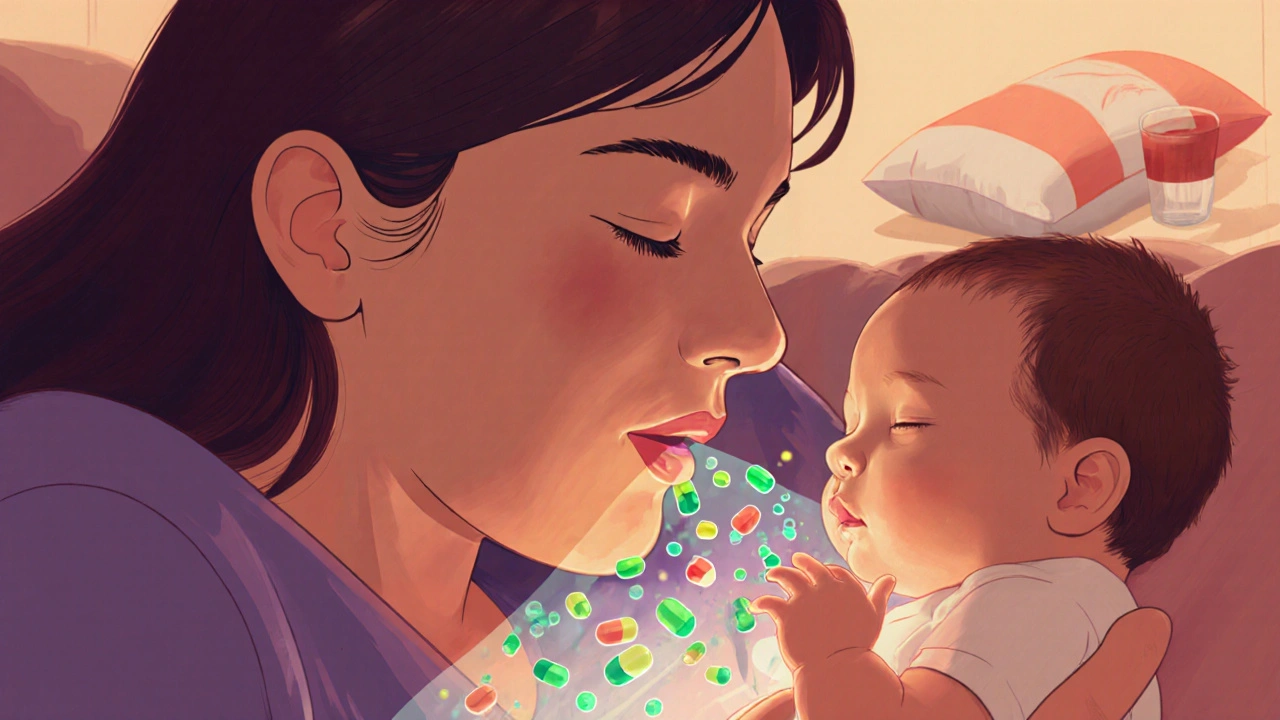
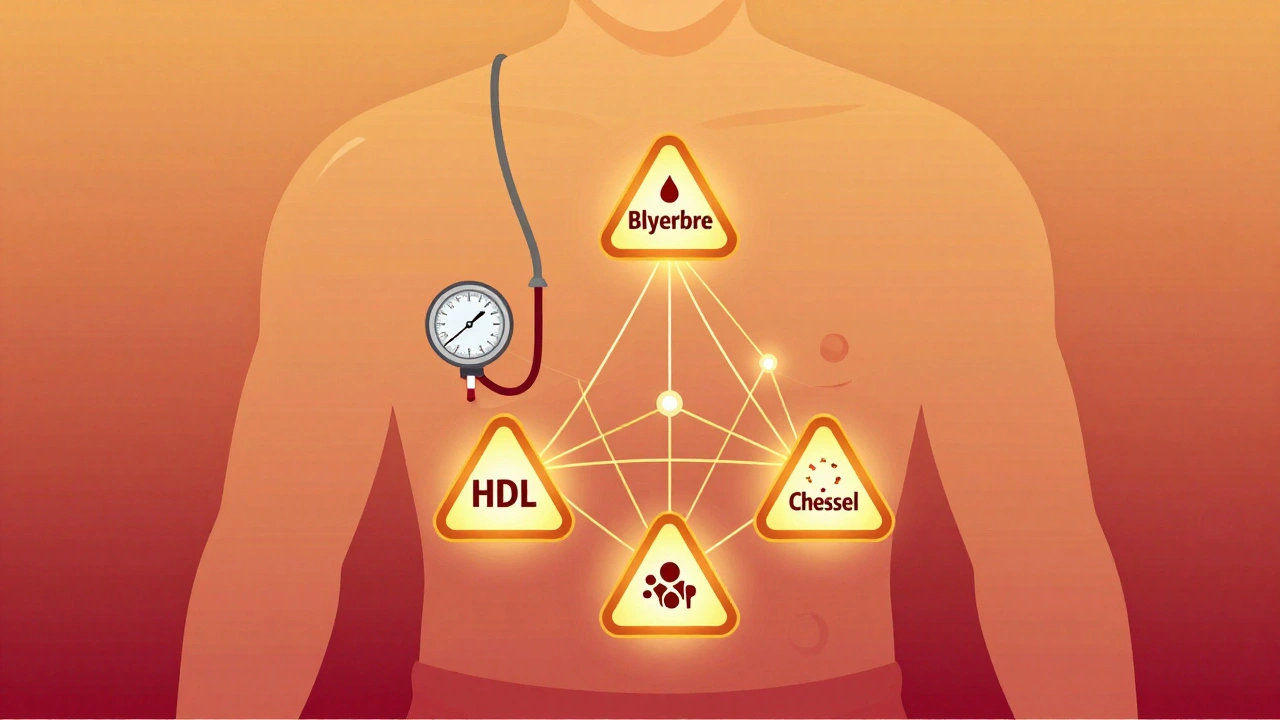

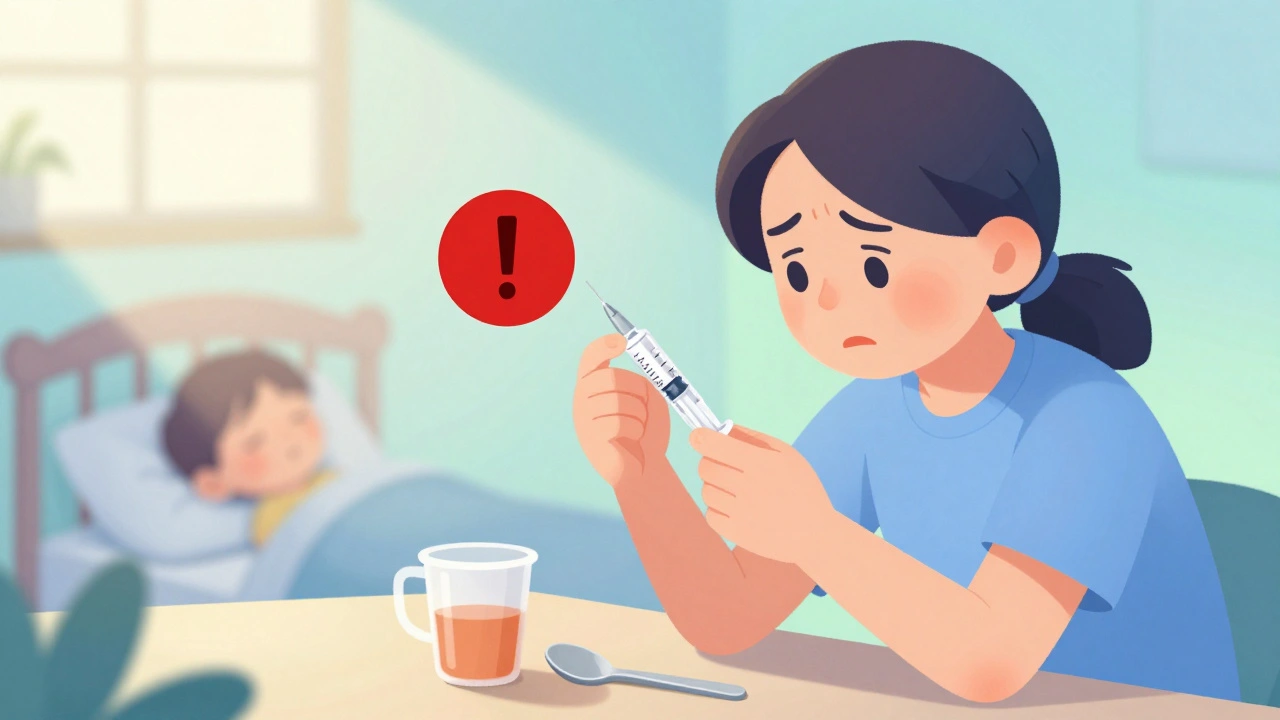

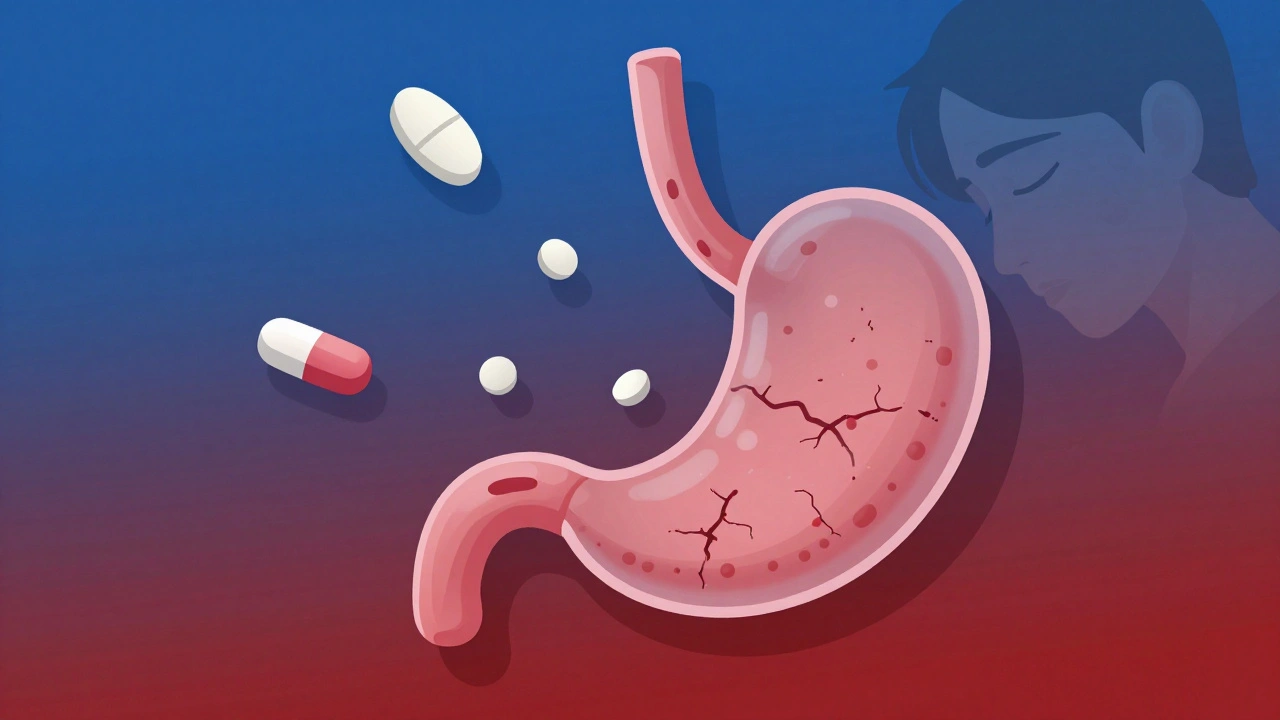
Emily Kidd
October 30, 2025 AT 20:32just took ibuprofen before bed and my 3 week old slept 6 hours straight for the first time. i was so scared to take anything but now i know it’s fine. thanks for this post!!
Justin Cheah
October 31, 2025 AT 21:24you guys are being manipulated by big pharma and lactation consultants who get paid by drug companies. did you know the FDA doesn't test drugs on breastfeeding women? they just extrapolate from rats and then lie to you. that 'L1-L5 scale' is just a marketing tool. i've seen babies turn purple after their moms took 'safe' antidepressants. they cover it up with stats. the real danger is they make you think it's okay to poison your child with chemicals. ask yourself: why do they want you to keep taking pills while nursing? profit. always.
caiden gilbert
November 2, 2025 AT 02:45man i remember when i was freaking out over a single Advil. turned out my kid was just going through a growth spurt and crying because his legs hurt. we all panic. the fact that you're even asking means you're already doing better than 90% of parents. chill. your baby's not a lab rat. they're made of tougher stuff than we give them credit for.
phenter mine
November 3, 2025 AT 19:28so if i take tylenol after feedin do i need to wait 4 hours? or is it just the time before the next feed? i always get confused. also is it okay to use that lidocaine patch for my back? i think i read somethin bout it but im not sure. ty for the info!
Aditya Singh
November 3, 2025 AT 22:22the L1-L5 classification system is fundamentally flawed due to its reliance on pharmacokinetic models that ignore inter-individual variability in CYP450 enzyme expression, particularly CYP3A4 and CYP2D6 polymorphisms, which significantly alter milk-to-plasma ratios. furthermore, the assumption that passive diffusion governs all drug transfer neglects active transport mechanisms mediated by P-glycoprotein and breast milk-specific efflux pumps. the data is statistically underpowered for neonatal neurodevelopmental endpoints, and the reliance on case reports as evidence for L2 drugs is methodologically unsound. you're being sold a narrative.
Katherine Reinarz
November 4, 2025 AT 15:58i took sertraline and my baby cried for 14 hours straight for 3 days. they said it was normal. i didn't know i was supposed to 'watch for signs.' now my kid has anxiety. i should've stopped. i feel so guilty. why didn't anyone warn me??
John Kane
November 5, 2025 AT 15:40hey everyone - i just want to say how proud i am of all of you for being this thoughtful about your baby’s health. it’s not easy being a new parent, especially when you’re tired, overwhelmed, and trying to do right by your kid. this post? it’s gold. and the fact that you’re reading it, asking questions, checking LactMed, talking to your docs? that’s the real win. you’re not just surviving - you’re thriving. and your baby feels that. trust yourself. you’ve got this. and if you ever doubt it, come back here. we’ve got your back.
Callum Breden
November 7, 2025 AT 06:01This post is dangerously misleading. The LactMed database is not peer-reviewed. The L1-L5 system is proprietary and lacks regulatory oversight. To suggest that 98% of medications are 'safe' without citing longitudinal neurodevelopmental studies is irresponsible. The absence of evidence is not evidence of absence. You are endangering infants by promoting pharmaceutical complacency. This is not medical advice - it is corporate propaganda.
Mansi Gupta
November 8, 2025 AT 01:34Thank you for sharing this comprehensive overview. I appreciate the inclusion of LactMed and MotherToBaby as resources - these are invaluable for healthcare professionals and caregivers alike. The emphasis on timing and pharmacokinetic principles is particularly helpful. For those who may feel uncertain, consulting a certified lactation consultant or clinical pharmacist can provide personalized reassurance. Small, informed choices make a significant difference.
Erin Corcoran
November 9, 2025 AT 06:51OMG YES!! 😭 I was so scared to take my anxiety meds until I found out sertraline was L1. My baby’s been sleeping like a champ and I’m finally not a zombie. LactMed app is my new bestie 🙌 I even showed my OB and she was like ‘wow you did your homework’ 😎
shivam mishra
November 9, 2025 AT 13:51in india, most moms don't even know about LactMed. i showed my sister-in-law this post and she cried because she stopped breastfeeding because her doctor said 'avoid all meds.' she's been pumping and dumping for 3 months. we need to spread this info. it's not just about safety - it's about dignity. you don't have to suffer in silence just to feed your baby.
Scott Dill
November 10, 2025 AT 21:51so if i take a pain pill right after my 1am feed and he doesn't eat again until 5am - is that enough time? i’m trying to time it like a pro. also, can i drink wine? just one glass? i know caffeine’s a thing but what about alcohol??
Arrieta Larsen
November 12, 2025 AT 09:48took amoxicillin for a sinus infection. baby had a tiny rash. i panicked. called MotherToBaby. they said it’s common, harmless, and to keep going. it faded in 48 hours. you’re not alone. trust the science, not the fear.
Niki Tiki
November 13, 2025 AT 21:46if you're breastfeeding you're already a better parent than 90% of Americans who just hand their kids sugar water and cartoons. stop worrying about pills and start worrying about the fact that your kid's got a 40% chance of growing up in poverty with no healthcare. that's the real crisis. but hey, at least your ibuprofen is 'L1' right? 🤡